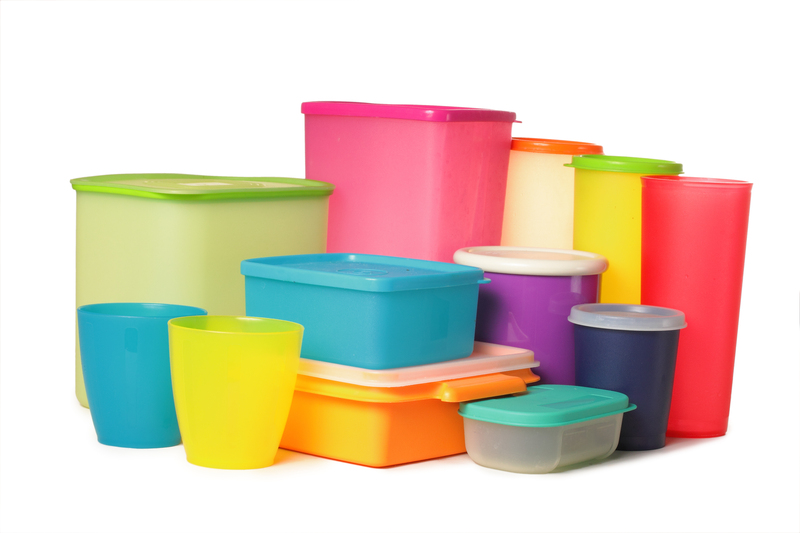What Happens to Recycled Pots and Pans: A Comprehensive Guide
Do you ever wonder what happens to recycled pots and pans once you drop them off at your local recycling center? Understanding the journey of these everyday kitchen items is not only fascinating, but also critical for making informed, sustainable decisions. In this article, we'll explore the ins and outs of pots and pans recycling, discussing how the process works, where your old cookware goes, and the environmental impact of recycling metal kitchenware. Strap in for a detailed look on the fate of used cookware--from donation bins to their new lease on life!

Why Recycle Pots and Pans?
Recycling pots and pans is an important aspect of sustainable living. Old or broken cookware is typically made from materials such as aluminum, stainless steel, cast iron, and sometimes copper. These materials do not biodegrade, and leaving them in landfills can cause detrimental environmental effects. Here's why recycling these kitchen staples is essential:
- Conservation of Natural Resources: Metals used in cookware can be reused, reducing the need for virgin ore extraction.
- Reduction of Landfill Waste: Diverting bulky metal items from the landfill preserves valuable space and reduces environmental contamination risks.
- Lower Manufacturing Energy: Recycling metals requires far less energy than producing new materials from scratch.
- Decrease in Greenhouse Gas Emissions: By recycling pots and pans, we limit the carbon dioxide released from mining and manufacturing processes.
Types of Pots and Pans That Can Be Recycled
Before diving into what happens to recycled cookware, it's important to know which types can actually be recycled. Common recyclable kitchenware includes:
- Stainless steel pots and pans
- Cast iron cookware
- Aluminum pans (many baking trays and muffin tins fall into this category)
- Copper-bottomed pans
Note: Non-stick pans, ceramic-coated cookware, and items with plastic handles or glass lids may require special handling. Always check with your local recycling program for specific guidelines on how to dispose of items with mixed materials!
The Recycling Process: What Actually Happens?
1. Collection and Sorting
The journey of recycled pots and pans begins with collection. Whether through curbside recycling, special drop-off points, or scrap metal drives, unusable cookware first needs to be gathered in one place.
- At the recycling center or scrapyard, items are sorted by material. Aluminum pans are separated from stainless steel and cast iron.
- Any attached non-metal parts, such as plastic handles or rubber gaskets, are removed and either recycled separately or sent to landfill if recycling is not possible.
2. Cleaning and Preparation
Before melting metal items, recycling facilities must clean the pots and pans. This can involve:
- Removing food residues and oils
- Stripping away non-metal contaminants
Some facilities use industrial washers, while others may manually clean high-value cookware like copper items.
3. Shredding and Melting
Next, the metal is shredded into smaller pieces for easier processing. Shredding increases the surface area, making melting more energy-efficient.
- Aluminum cookware melts at a relatively low temperature, while stainless steel and cast iron require higher heat.
- The shredded metal is then loaded into a blast furnace or electric arc furnace, where it is melted down and purified.
4. Purification and Refining
During the melting process, impurities rise to the top and are skimmed off. Some metals may undergo further chemical purification to ensure the resulting material is high quality...
- Aluminum is often alloyed with other metals for strength.
- Stainless steel may be blended with chromium or nickel to achieve the desired properties.
5. Solidification and New Product Manufacturing
Once purified, the molten metal is poured into molds to form ingots, sheets, or billets--standard shapes that manufacturers use to create new products.
- Recycled aluminum is often made into new cans, bike frames, or kitchen utensils.
- Stainless steel and cast iron are commonly used in construction materials, car parts, and--ironically--new cookware.
- Scrap copper is recycled into pipes, electrical wiring, or decorative items.
In essence, your old cookware gets a new lease on life, feeding a continuous cycle of re-use that dramatically reduces waste.
The Environmental Impact of Recycling Cookware
Recycling pots and pans is a huge win for sustainability. Metal is a highly recyclable resource that can be reprocessed multiple times without losing its properties.
- According to the Aluminum Association, recycling aluminum saves up to 95% of the energy needed to make the metal from raw materials.
- Stainless steel recycling conserves valuable elements like chromium and nickel, crucial for dozens of industries.
- Copper recycling reduces the need for environmentally disruptive mining.
On a global scale, the circular economy approach, where materials are reused and remanufactured, is gaining traction--and your discarded pots and pans can help drive this movement!
Alternative Options: Reusing and Donating Used Cookware
Before considering recycling, it's important to ask: can these items still be used? Repurposing or donating pots and pans can further extend their lifespan. Here are a few ideas:
- Donate functional cookware to local charities, shelters, or thrift stores.
- Repurpose pans as planters, storage bins, or craft projects.
- Offer them on community sharing apps; one person's trash can be another's treasure!
Only when items are truly beyond repair should recycling be considered.
Common Questions About Pots and Pans Recycling
Can non-stick or Teflon pans be recycled?
Many recycling centers will not accept pans with non-stick or Teflon coatings because these plastics are tough to remove and can contaminate the recycling stream. If the non-stick surface is removable, consider stripping it and recycling the bare metal. Always check your local guidelines.
What about pots and pans with plastic or wood handles?
Most facilities require that you remove handles or lids made of other materials before recycling. The metal part is recyclable, while handles may need to be disposed of separately. Some specialist handlers may accept complete items and separate the materials for you.
How can you find where to recycle your old pots and pans?
Local scrap metal dealers often take used cookware. You can use online resources like Earth911 or local government recycling directories to find appropriate locations. Some retailers even offer take-back programs when you buy new kitchenware.
Does recycling old cookware really make a difference?
Absolutely! Every pot or pan you recycle helps conserve metals, reduce energy consumption, and lower your personal carbon footprint.
Tips for Recycling Pots and Pans Successfully
- Contact your local recycling center for up-to-date guidelines on what kitchen items they accept.
- Clean cookware before recycling; excessive food or grease can cause problems at the facility.
- Remove all non-metal parts and separate lids from the main body.
- For Teflon or coated pans, look into specialized disposal or recycling solutions.
- Consider donation or repurposing before sending items for recycling.
Creative Ways to Reuse Pots and Pans
Sometimes, the greenest solution is not recycling, but repurposing cookware in creative ways:
- Garden Planters: Old pots make excellent quirky plant holders.
- Craft Supplies: Muffin tins can organize beads, screws, or other small bits in the workshop.
- Bird Baths or Feeders: Turn a large frying pan upside down and mount it on a stand.
- Wall Art: Arrange vintage pans or lids decoratively in the kitchen.
These ideas help extend the life of your items and can be a fun DIY project!
The Lifecycle of Recycled Pots and Pans: From Scrap to New Product
The journey your pots and pans take after recycling is a testament to the efficiency and effectiveness of metal recycling. Here's a summarized version of their lifecycle:
- Collection - Gathered from homes, businesses, or drop-off centers.
- Sorting - Categorized by metal type and contaminant removal.
- Shredding - Broken into smaller pieces for better processing.
- Melting & Purification - Transformed into usable raw material.
- Manufacturing - Used to create new products: cans, car parts, or even new cookware!
Your efforts don't just end with tossing that old pan into a bin; they set off a chain reaction leading to resource conservation, energy savings, and a healthier planet.

Final Thoughts: The Importance of Recycling Pots and Pans
Recycling old cookware--be it aluminum pans, cast iron skillets, or stainless steel stockpots--is a huge step toward responsible waste management and environmental stewardship. By understanding what happens to recycled pots and pans, you can feel confident that your actions directly help reduce resource extraction, minimize pollution, and promote a greener future.
Next time you upgrade your kitchen gear, think about where your old pots and pans will go. Choose to recycle--or better yet, find a new use--and you'll make a lasting impact. Every recycled kitchen item is a step toward a more sustainable world!
Summary: Key Takeaways About Pots and Pans Recycling
- Metal pots and pans are highly recyclable--but check local guidelines for special coatings or attachments.
- Recycled cookware is melted, purified, and reused in new products, dramatically saving energy and resources.
- Donating or repurposing old cookware can be even better than recycling, when possible.
- You make a real difference when you recycle your pots and pans!
Take action today. Your kitchen's old castoffs could become tomorrow's essential materials, helping to build a cleaner and more sustainable future for everyone.